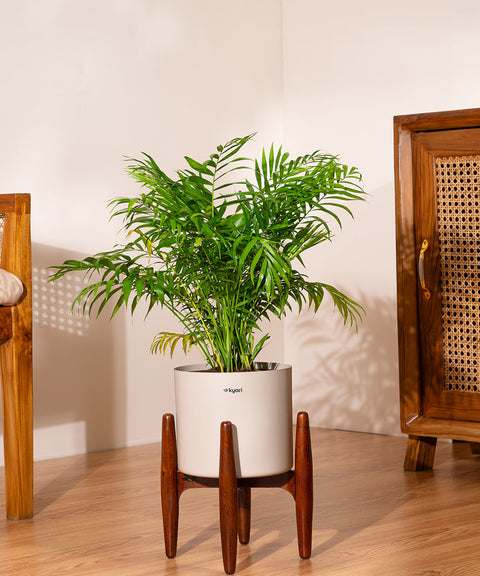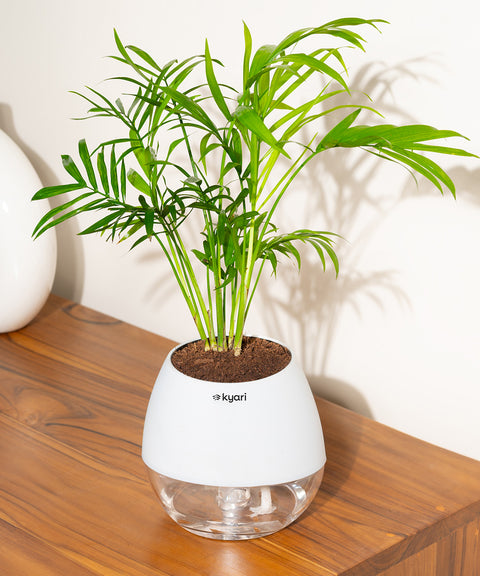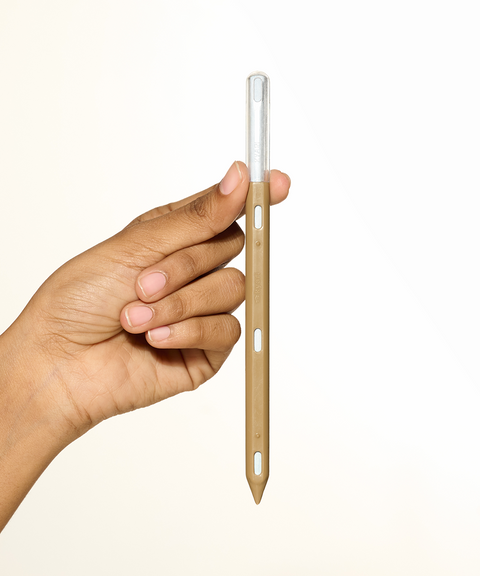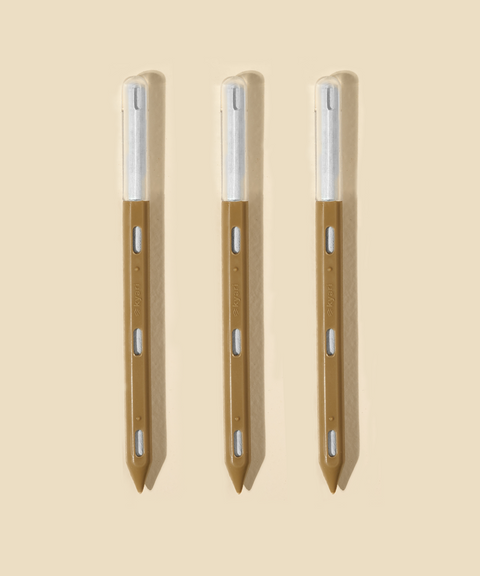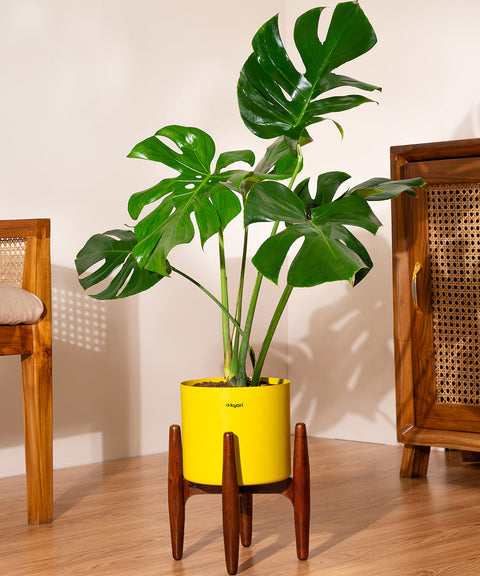About
Chamaedorea Palm
The Chamaedorea Palm, commonly known as the Parlor Palm, is a popular indoor plant known for its elegant, feathery fronds and low-maintenance requirements. This plant adds a touch of tropical sophistication to any space
Origin
Native to the rainforests of Southern Mexico and Guatemala.
Light
Prefers bright indirect light but can tolerate lower light conditions. Direct sunlight can cause the leaves to scorch. Chamaedorea Palms are versatile and can adapt to various light environments though they thrive best in well-lit areas.

Water
Water when the top inch of soil feels dry. Chamaedorea Palms prefer evenly moist soil but are susceptible to root rot if overwatered. Adjust watering frequency based on light exposure and indoor climate.
Humidity
Thrives in average household humidity but appreciates occasional misting. The Chamaedorea Palm can adapt to varying humidity levels making it versatile for different indoor environments.
The Chamaedorea Palm is sometimes called the "lucky palm"? This plant is so good at thriving in low light that it was a staple in speakeasies during Prohibition. Its ability to survive in dimly lit, secretive places made it the ultimate undercover agent of the plant world.
Placement
The Chamaedorea Palm is known for its calming energy and elegant appearance. Here’s where to place it
Adds a touch of greenery and improves air quality. Position it near a window with indirect light to showcase its delicate fronds.
Enhances focus and reduces stress. The presence of a Chamaedorea Palm can create a more serene and productive workspace.
Promotes a restful sleep environment by purifying the air. A Chamaedorea Palm in the bedroom can help create a calming atmosphere
Frequently Asked Questions
The ideal temperature for a Chamaedorea Palm is between 65°F to 80°F (18°C to 27°C). It prefers warm stable temperatures and should be protected from cold drafts.
Water your Chamaedorea Palm when the top inch of soil feels dry. Adjust the frequency based on light exposure and indoor climate ensuring the soil remains evenly moist but not soggy
Chamaedorea Palms prefer bright indirect light but can tolerate lower light conditions. Avoid placing them in direct sunlight to prevent leaf scorch
Place your Chamaedorea Palm in a bright indirect light area such as the living room or office. They thrive in well-lit areas but can adapt to lower light conditions
Trim off any dead or yellowing fronds and ensure the plant is free from dust. Regular pruning helps maintain its shape and encourages new growth
Brown leaf tips can be caused by low humidity or underwatering. Increase humidity and ensure consistent watering
Yellowing leaves indicate overwatering or nutrient deficiency. Improve drainage and consider adding a balanced fertilizer.
Keep the plant clean by wiping the leaves and inspecting regularly for pests. Use insecticidal soap if necessary. Chamaedorea Palms can be susceptible to spider mites and mealybugs
Drooping fronds can be caused by underwatering or overwatering. Adjust watering schedule to ensure soil is evenly moist but not soggy.
Yellow leaves can indicate overwatering. Allow the soil to dry out between waterings and ensure the pot has adequate drainage.








 Limited Time Deal
Limited Time Deal
 BYOB - Small Plants
BYOB - Small Plants



















